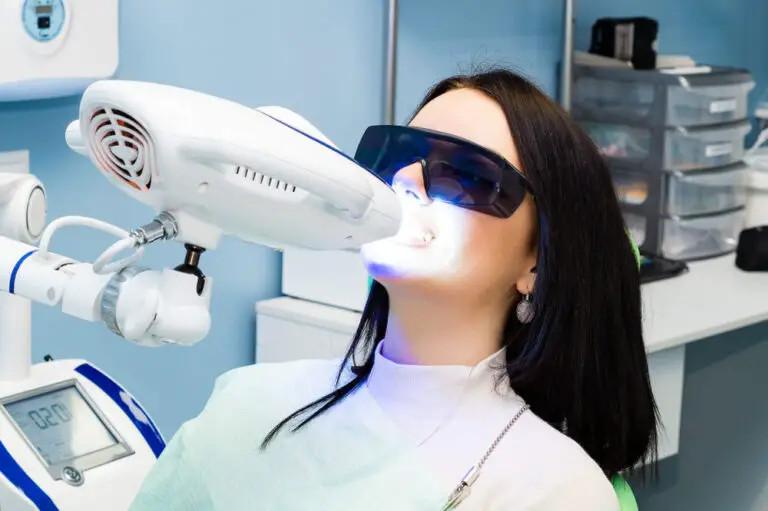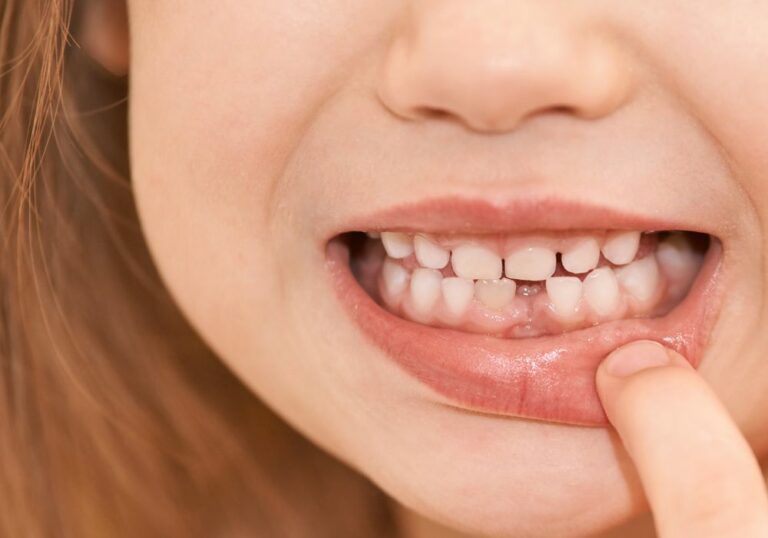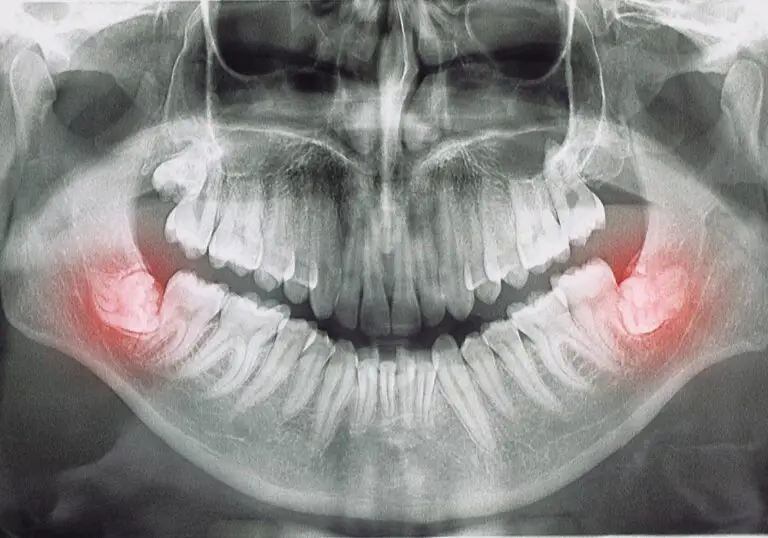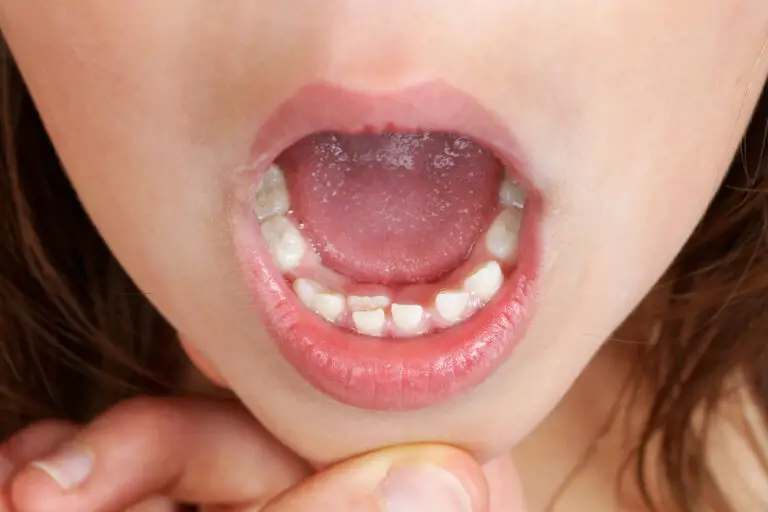Having straight, properly aligned teeth is important, not only for an attractive smile, but also for dental health. Misaligned teeth put you at risk of tooth decay, gum disease, uneven wear, and jaw pain. If your teeth are crooked, protruding, or too far back, you may be wondering if you can straighten them without braces.
While braces are often the best way to align teeth, there are some natural methods you can try to push teeth forward gently over time. Here’s a comprehensive overview of how to push teeth forward naturally using retainers, springs, aligners, and other DIY techniques.
What Causes Teeth to Become Misaligned?
Teeth can be pushed forward, backward, or become crooked for a variety of reasons that affect the positioning over time:
- Genetics: Some people are just born with teeth that are spaced too far apart, are smaller or larger than normal, or don’t align properly with the jaw. This can cause teeth to tilt, twist, overlap or stick out. Mismatched jaw and tooth sizes are a common genetic cause.
- Thumb sucking: Sucking on thumbs or fingers as a child for prolonged periods can slowly push the front teeth forward out of place over months and years. The upper front teeth may protrude significantly.
- Tongue thrusting: If a person pushes their tongue against the front teeth instead of the roof of the mouth when swallowing or speaking, this can apply excessive pressure that slowly moves the teeth forward. Tongue thrusting is often subconscious.
- Mouth breathing: Breathing through the mouth instead of the nose can put extra strain on the teeth and jaw. The pressure and lack of normal tongue positioning from chronic mouth breathing may gradually alter teeth placement.
- Clenching and grinding: Habitually grinding or clenching the teeth, which often happens during sleep, can shift teeth out of their natural alignment over time. The abnormal grinding forces move teeth.
- Missing teeth: When teeth are lost and not replaced by implants or bridges, the remaining teeth will often tilt or rotate to shift into the newly open space. This changes the alignment of surrounding teeth.
- Chewing imbalance: Consistently chewing more on one side of the mouth can cause asymmetric forces that push teeth out of position. An unbalanced chewing habit over many years may gradually misalign teeth.
- Trauma: Injury to the teeth or jaw from sports collisions, bike accidents, or fighting can fracture teeth or crack the jaw joint, leading to shifted and crooked teeth later on.
- Hereditary conditions: Some hereditary conditions like Marfan syndrome or Ehler-Danlos syndrome can cause teeth misalignments along with other health issues.
Risks and Side Effects of Misaligned Teeth
Living with crooked, crowded, gapped, or protruding teeth for prolonged periods can lead to oral health complications and other issues:
- Difficulty chewing: Misaligned teeth make it harder to bite and chew food properly, which can lead to digestion problems.
- Tooth decay: Crooked teeth with gaps and crowding tend to trap more food debris. This causes greater plaque buildup and increases tooth decay risk.
- Gum disease: The plaque buildup from misaligned teeth also boosts the chances of gingivitis and periodontal disease.
- Tooth abrasion: Protruding teeth often exhibit higher wear and abrasion from their prominence.
- Chipping: Teeth that protrude or tilt dramatically are more prone to chipping from trauma.
- Speech problems: Severely crooked teeth or gaps can imped proper pronunciation of words. This may require speech therapy exercises.
- TMJ/TMD: Jaw pain, clicking, locking, and misalignment from TMJ and TMD issues are more likely with poor tooth alignment.
- Sleep apnea: Having retrognathic (too far back) teeth and jaw can increase sleep apnea severity.
- Digestion issues: Misaligned teeth hamper proper chewing and biting, which can create problems digesting some foods.
- Headaches: Jaw clenching, TMJ disorders, and muscle strain are common side effects of poor tooth alignment that can result in headaches and migraines.
- Self-esteem: Having an unattractive smile because of severely crooked teeth often diminishes self-confidence and harms self-image.
Orthodontic treatment is often warranted to help not just cosmetic appearance but also reduce the many potential health issues caused by teeth misalignments. First, let’s look at some natural realignment methods.
Natural Tooth Alignment Techniques and Options
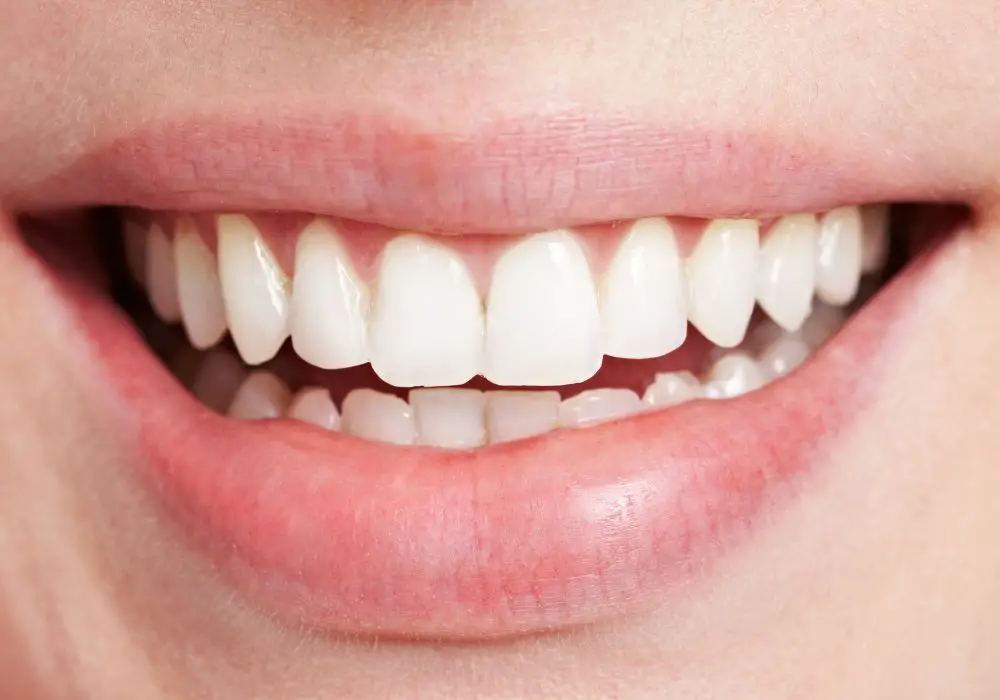
While orthodontic braces are the most effective approach for improving tooth alignment, there are some natural at-home options you can try as well. These won’t work rapidly but do apply gentle pressures to progressively move teeth into better positioning over weeks and months:
1. Clear aligners
Clear plastic aligners have soared in popularity in recent years as an alternative DIY method to straighten teeth subtly over time. Here’s how they work:
- Custom aligner trays are made to fit precisely over your teeth.
- Each aligner set is slightly different, exerting light pressure to incrementally shift teeth.
- Aligners are worn for 1-2 weeks before switching to the next set in the series.
- Treatment programs typically involve wearing aligners for 20-22 hours per day.
- Most plans take 4-8 months to achieve noticeable straightening results.
Aligners are removable so you can still brush and floss during treatment. Brands like AlignerCo and Candid provide impression kits and remote monitoring for affordable home aligner therapy.
Some benefits of clear aligners include:
- Completely transparent and removable
- Won’t irritate mouth or gums like metal braces
- Can gradually fix mild to moderate crowding and spacing
- Allows you to eat normally
- Works for both teens and adults
Clear aligners do have limitations:
- Not as effective as braces for severe misalignments
- Requires discipline to wear aligners consistently each day
- May not work well for complicated bite issues
- Can be dislodged by hard or chewy foods
Overall, clear aligner therapy provides a more comfortable, convenient alternative to braces for people with minor to moderate teeth alignment problems. Most teeth can be straightened within limits using a properly monitored program of custom aligner trays.
2. Dental retainers
Dental retainers are custom devices made to hold teeth in position, often after braces treatment. But retainers can also be used proactively to apply light, steady pressure that slowly shifts teeth into alignment. Two main types exist:
- Removable retainers are plastic aligners similar to mouthguards that are taken out to eat. They have a wire that runs across the front teeth.
- Fixed (bonded) retainers are permanently glued to the backs of front teeth to keep them firmly in place. These remain on full-time.
To push teeth forward using retainers:
- Wear the removables for longer daily periods to exert gradual force on the teeth.
- Request marginally smaller retainers to create tightness that pushes teeth.
- Have the orthodontist periodically adjust the retainers as teeth shift.
- Bonded fixed retainers continuously apply pressure 24/7.
With consistent long-term wear, retainers provide subtle realignment action via their snug fit over time. Most patients require new retainers every 4-6 months as space opens up from teeth movement. Done gradually, retainers can safely nudge teeth into better alignment without braces.
3. Tooth springs
Dental springs offer another natural teeth straightening approach. These small coiled springs are temporarily bonded to individual teeth using dental adhesive. The springs apply gentle constant force to slowly shift teeth in the desired direction.
Orthodontic tooth springs cost around $10-$50 per spring. To use them effectively:
- Have an orthodontist properly determine the ideal spring size and placement location on the teeth for the desired realignment.
- Start with springs on just 1-2 teeth first to gauge the amount of pressure your teeth can handle.
- Monitor the springs daily and re-apply dental adhesive frequently to keep them securely bonded to the teeth.
- Wear the springs for a few hours daily at first, and then work up to longer periods as comfortable.
- Replace springs with new ones approximately every 1-2 months as the teeth begin to shift.
Springs should never cause pain or drastically move teeth. See your dentist promptly if any problems occur. When used properly under dental supervision, tooth springs harness continuous gentle force to naturally nudge teeth.
4. Lip bumpers
This appliance consists of a custom wire component that extends along the inner lips and gums. It attaches via bands around the back molars. The lip bumper wire pushes the front teeth forward each time you swallow or move your lips.
Benefits of lip bumpers include:
- Comfortable, custom wire fits your mouth shape.
- Allows natural lip motions to provide realignment force.
- Can be worn certain hours during the day or night as recommended.
- Provides very light, gradual tooth movement with months of wear.
Lip bumpers are generally only effective for minor tooth positioning issues since the forces are gentle. Most patients wear the devices for 12-18 months to achieve incremental improvements in tooth alignment. This method is sometimes used for adolescents still growing.
5. Tongue exercises
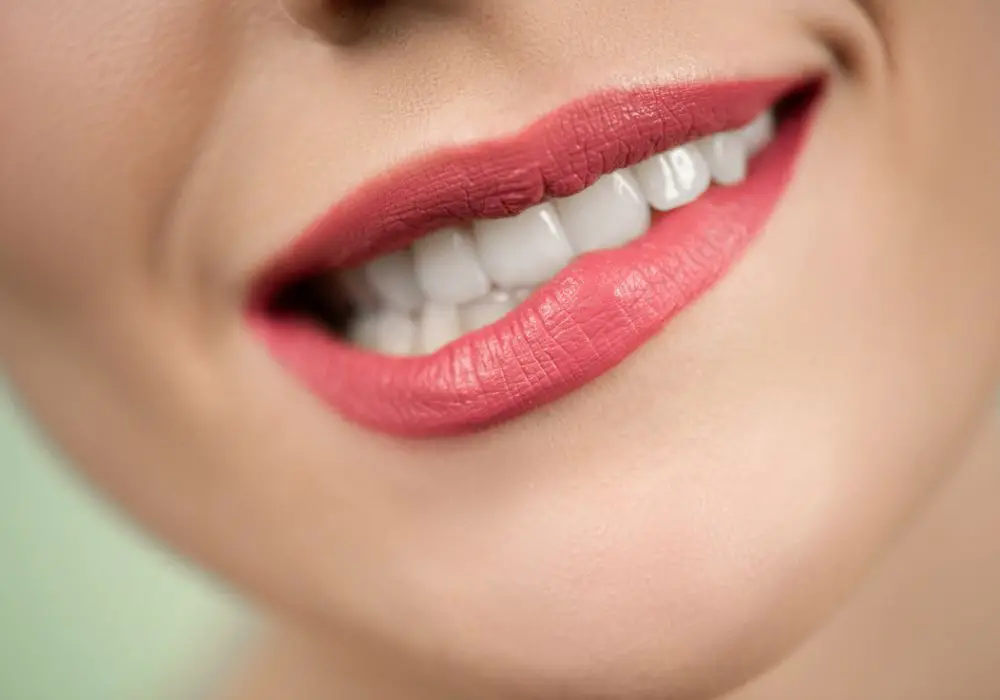
Believe it or not, the tongue’s positioning plays a major role in dental alignment. Performing targeted tongue strength and posture exercises can help naturally guide teeth into proper positioning:
Tongue presses
- Place the entire tongue firmly against the roof of the mouth and hold for 5-10 seconds before releasing. Repeat frequently throughout the day.
- Position the tongue between the top and bottom teeth with light pressure and hold for 30 seconds before releasing and repeating.
Tongue posture practice
- Rest the tongue against the roof of the mouth with teeth slightly parted and lips together whenever possible. Avoid letting the tongue push outward on the teeth.
- Practice swallowing with the tongue pressed on the palate, not the front teeth.
Aim for 10-15 minutes daily of focused tongue exercises. This strengthens the muscles and trains the tongue to rest in alignment-friendly positions. With time, this can guide teeth into natural proper placement.
6. Cheek and lip exercises
In addition to the tongue, the cheeks and lips also contact the teeth and can exert subtle pressures. Doing cheek and lip exercises helps develop muscles that can favorably position teeth:
Lip exercises
- Pucker lips tightly like a fish, hold for 5 seconds, release and repeat.
- Press lips firmly together, hold 5 seconds, then return to normal.
- Smile widely and pull lips back as far as possible to stretch muscles.
Cheek exercises
- Inflate cheeks fully with air and apply light pressure against the teeth before releasing.
- Make wide smiling expressions, pulling the cheeks back toward the ears.
- Gently press cheeks inward against the side teeth.
Perform cheek and lip exercises for 5-10 minutes daily to strengthen these muscles and provide beneficial pressures on the teeth.
7. Headgear appliance
This appliance consists of adjustable external wires and bands that attach via fixed orthodontic brackets glued onto the teeth. The headgear wires and elastics apply continual force to gradually shift teeth into alignment.
Benefits of headgear include:
- Can correct severe overbites and retrognathic jaws.
- Wires and elastics are adjustable as needed by the orthodontist.
- Effective for improving alignment prior to braces.
- Typically worn 10-12 hours at night when sleeping.
Headgear must be professionally fitted and monitored since the forces are stronger. It works best for children still growing. Adults may use headgear prior to more intensive orthodontic treatment.
8. Chew toys
Special wooden chew toys and devices provide another natural teeth alignment method. Chewing on these toys can guide erupting or already emerged teeth into better positions:
- Help position erupting wisdom teeth properly.
- Shift mildly crooked front teeth by chewing toy held at an angle.
- Strengthen the jaw muscles to improve alignment.
Chew toys come in various shapes and textures. Work with your dentist to determine if they could benefit your specific situation.
When You Should Seek Professional Orthodontic Help?
While natural teeth straightening methods do offer certain benefits, there are clear limitations:
- Natural techniques work slowly, usually ≤1 mm of movement per month.
- They are only effective for mild issues like small gaps or slight crowding.
- Without orthodontic guidance, complications like bite changes or loose teeth can occur.
- Compliance withconsistent daily use can be challenging.
See an orthodontic specialist promptly if:
- You have moderate to severe crowding, gaps, or bite alignment issues.
- Your teeth have shifted significantly from their original healthy positions.
- You experience any jaw pain or discomfort from your current tooth positioning.
- You desire much faster and more dramatic improvements in your tooth alignment.
Braces, Invisalign, or other custom-planned orthodontic treatments are required for fixing serious misalignments and bite problems. Only orthodontic devices can reliably produce the amount of tightly controlled force needed for major tooth movements of several millimeters.
During an exam, the orthodontist will be able to determine if your particular case can be treated using clear aligner therapy or if traditional braces would work better. X-rays and digital scans help characterize the specifics of your tooth and jaw anatomy to plan the ideal correction path.
Following orthodontic treatment, retainers are often needed long-term to hold the teeth in proper alignment. Otherwise, they tend to relapse towards their original positions over time.
Maintaining Proper Alignment After Straightening
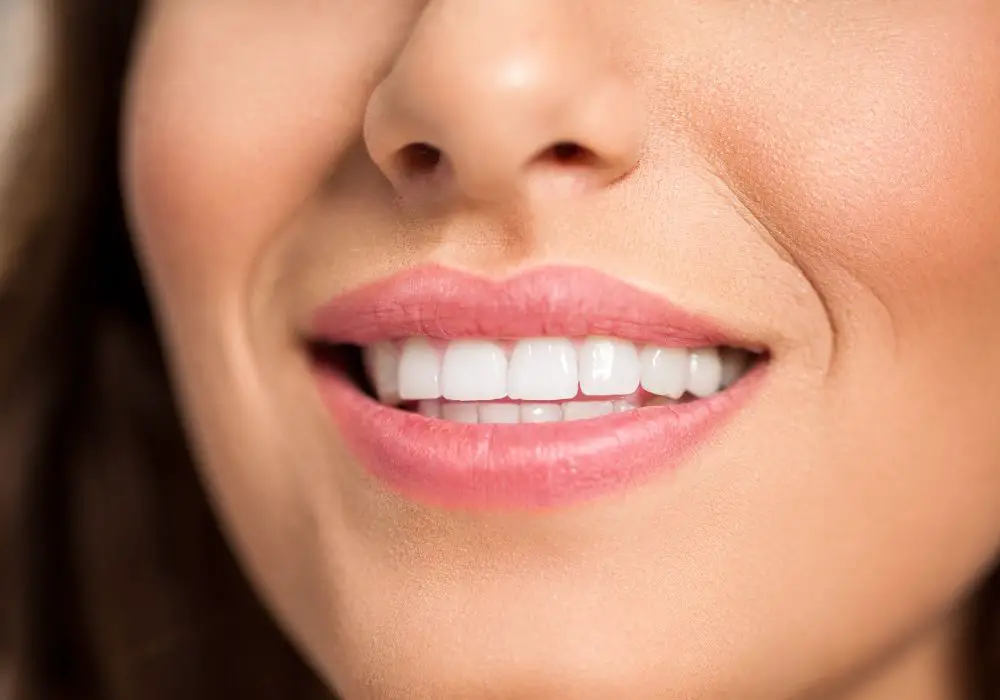
Once you’ve succeeded in moving your teeth into ideal alignment either with orthodontics or natural methods, diligent retention is required to preserve the results long-term. Without ongoing retention, teeth tend to revert back toward their previous crooked or spaced placements.
Here are some key tips to keep teeth properly positioned post-treatment:
- Wear your orthodontic retainers as often as prescribed. After braces, you may need to wear removable retainers full-time for many months, followed by nightly wear.
- If you have a fixed/bonded retainer attached to the backs of your front teeth, be sure to floss carefully beneath the wire. See your dentist promptly if it comes loose or breaks.
- Come to all scheduled retention check-up appointments with your orthodontist. Subsequent aligners, positioners, or new retainers keep your teeth stabilized.
- Avoid tongue thrusting, mouth breathing, nail-biting, and other habits that can shift your teeth. Breaking oral habits is crucial.
- Maintain excellent oral hygiene and have professional teeth cleanings every 6 months to prevent decay or gum disease around retainers.
- Ask your dentist about wearing a mouthguard during high-impact sports to keep teeth in position.
With diligent at-home care and retention methods, you can enjoy properly aligned teeth for the long run after completing orthodontic treatment. For mild improvements from natural tooth straightening, even more vigilance is needed to sustain results lifelong. But with discipline and persistence, you can maintain the smile you’ve worked hard for.
Frequently Asked Questions
How long does it take to move teeth naturally at home?
Using consistent natural techniques like spring retainers, aligners, and lip bumpers, you can expect very gradual tooth movements of approximately 0.5 to 1 millimeter per month typically. Moving even mildly crooked teeth completely into alignment can take many months to over a year using careful DIY methods.
Can I straighten teeth on my own or do I need to see an orthodontist?
You can certainly employ natural teeth alignment techniques without professional help. However, working with an orthodontist periodically is strongly recommended to ensure proper timing, placement, and adjustment of retainers, springs, bumpers, or aligners as your teeth shift. Attempting teeth straightening fully solo has risks.
Does gradually pushing teeth forward damage the roots?
Applying light, steady pressure on teeth over time via retainers, springs, lip bumpers, aligners, and other methods will not harm the tooth roots when done carefully in small increments. Avoid attempting to rapidly or aggressively push teeth forward, which can definitely damage the roots.
How often do I need to replace natural alignment devices?
As your teeth begin responding and shifting position from the natural pressure, devices like retainers, springs, and aligners will need replacing typically every 4-6 months on average. Some patients need new appliances more frequently depending on their individual rate of tooth movement. Don’t allow appliances to become too loose or they lose effectiveness.
Can adults move teeth as easily as kids?
Adults can still achieve successful teeth alignment with orthodontics, but it does take longer than children in most cases. As we age, the jawbones lose some elasticity and the tooth roots become more firmly cemented in the gums. Teens generally have faster orthodontic treatment times than adults, but adult teeth can still be moved approximately 1 millimeter per month on average.
Achieving straighter, properly aligned teeth is important for both smile aesthetics and dental health. While orthodontic braces tend to produce the most dramatic improvements quickly, natural alignment methods can also be effective for mild issues when applied diligently over longer periods. Talk to your dentist to decide which approach is right for your needs. With patience and consistency using either orthodontics or DIY techniques, you can gain a healthier, more beautiful smile.

